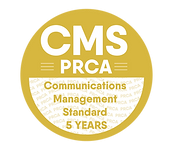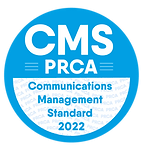Election Guide & Timetable
27 January 2017With the Northern Ireland Assembly now dissolved, the election campaign is well under way. Here is our guide on what to watch out for in the coming weeks.
Registration: Candidates and Voters
Parties are now selecting candidates in constituencies across Northern Ireland. Once candidates are selected they must formally register their nominations with their local electoral office on or before the 8 February. A full list of candidates will be published on Thursday 9 February. After a candidate has submitted his or her nomination, he or she is subject to the Electoral Commission’s rules on donations and campaign spending. These rules can be viewed here.
For voters, the key deadline for registering to vote is 14 February. Those applying for postal or proxy votes will need to register by 10 February. Information on applying can be found here. Voters may check if they are registered by calling the Electoral Office for Northern Ireland on 0800 4320 712 or by emailing info@eoni.org.uk.
The Campaign
Turnout will be key in this campaign. With voters returning to the polls for the third time in under a year, parties will be keen to ensure turnout doesn’t fall below the 54.9 per cent recorded at the last Northern Ireland Assembly election. They will also be looking to win over the thousands of voter who turned out for the EU Referendum vote last June when turnout was of 62.9 per cent. This could have a significant impact on the overall results.
LucidTalk has announced a series of fortnightly polls that will be published on 30 January, 13 February and 27 February. Hustings will take place around the country and televised debates involving the party leaders are also highly likely. Nolan Live will host two election specials to be broadcast on 15 and 22 February.
The Election and Beyond
Election day itself starts at 7am and finishes at 10pm on Thursday 2 March. The election is based on Proportional Representation, or 'PR', in which voters vote by placing a '1' beside their first preference on the ballot paper, a '2' beside their second preference and so on. As per previous elections, voters will need to confirm their identity by producing a passport, driving licence or electoral identity card. Polling stations will display up-to-date turnout numbers periodically throughout the day, which should serve as a good indication of final turnout.
Vote counting will begin at 8am on 3 March, at the eight count centres. A full list of these centres is available here. The process will begin with an initial tally, at which point quotas are established in each constituency. The quota is the number of votes a candidate requires in order to be elected – calculated by dividing the total number of votes cast by the number of seats to be filled plus one. Once this has been done the process of counting first-preference votes begins followed by the gradual transfer of votes as candidates are elected and eliminated.
This process continues until five MLAs have been elected. The reduction in seats, which came about as a result of the Stormont House Agreement, will result in higher quotas. This could cause some electoral upsets as one thing is certain: there will be eighteen fewer MLAs returned to Stormont.
Following the election, the Assembly is required to meet within one week and a new Executive must be in place within two weeks of that initial meeting. If the Assembly fails to nominate a First and deputy First Minister during that time, the law requires the Secretary of State, James Brokenshire MP, to call an election. The UK Government would need to pass emergency legislation to prevent this from happening and to restore direct rule. In the absence of agreement between the parties, this is a real possibility.








